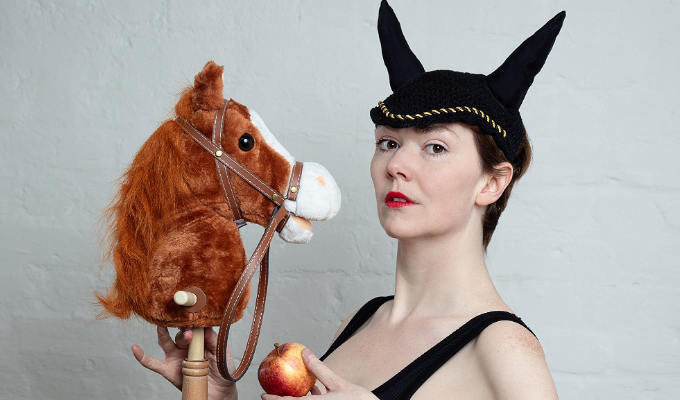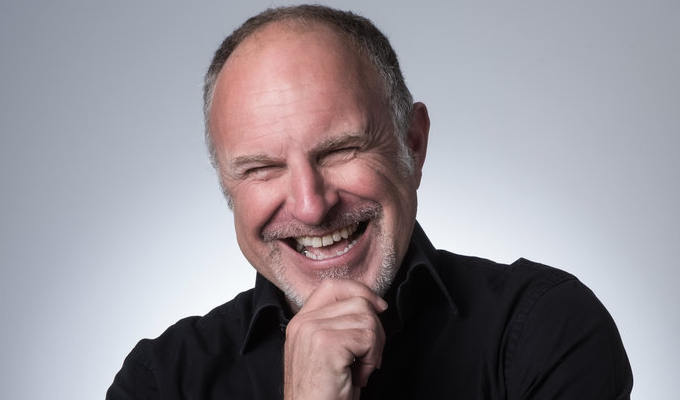
How to tell a story in stand-up
Comedy director Chris Head has some advice
A significant part of stand-up comedy is telling stories. But there are big differences between telling a story socially and telling a story in a stand-up. In this piece I’m going to give you some tips on stand-up storytelling that I teach in my stand-up courses in London, Stroud and online. We’ll be looking at how you can make your story work in a stand-up performance by:
- Hiding where it’s going
- Working on the unfolding (the structure)
- Finding surprising attitudes
- Bringing it to life with act-outs
Here I will discuss how Brian Regan’s UPS story and Kevin Bridges’ bus story work in these terms. Here they are. And at the end I apply the lessons learned to a story of my own.
Brian Regan – UPS
Kevin Bridges – Bus Stop
Hide where it’s going (misdirection)
When people tell a story socially they tend to give away the main thing straight away. But when I spoke with stand-up Mr Cee for my first book A Director’s Guide To The Art of Stand-up, he observed,‘If the audience doesn’t see it coming, it'll have a bigger impact when it lands. For example, I would never use the line, [which he says ruefully] "Oh my! You'’re never gonna believe what happened with me and this girl I saw last night."’Then when I tell you it was something negative, there’s no surprise because of how I’ve set it up. Whereas, if I say: "Oh my God. This girl I saw last night. She was beautiful!" Now you’re expecting some big, wonderful story. Because of my energy here, I’ve misdirected you. When the negative hits, you've already bought into the positive energy so it’s going to surprise you.’
A favourite Stand-Up Stories of mine is the above classic one from US comic Brian Regan, an innocent jester, telling a story of how he was confused and intimidated when he called parcel service UPS to pick up some boxes. It is a great example of a comic playing it dumb. There is exaggeration in the story too – as there will usually be in any comic telling of a story. Regan exaggerates both how brusque the UPS guy is and also how stupid he himself is.
In terms of hiding where it’s going, Brian Regan doesn’t start by saying ‘You won’t believe how stupid I was when I phoned up to get some boxes picked up!’. Instead, he sets up the situation, the given circumstances: crucially, just giving the facts and not saying anything about his inadequacies in the situation.
He then reveals the comic idea. In improvisation terms, this is the ‘game’ of the piece: He is trying to get a package picked up without the required skills and knowledge. This piece is then focused on this one clear comic idea, escalating it to greater and greater levels of absurdity until it’s capped off with a comic finish.
Apparently based on a real situation, the crux of the joke is that the authoritative voice on the end of the phone wants to know the ‘girth’ of the boxes and Regan has no idea what ‘girth’ means; but he will not admit to this and attempts to bluff his way through it. He also doesn’t have suitable scales to weigh the parcel. It’s in his increasingly desperate attempts to get them to pick up his boxes,that the comedy lies.
Structuring your story/attitude
A key difference with telling a story in stand-up is in how you consciously structure it. Often a great stand-up (and any good storyteller) will structure their story instinctively but it can help to have a model in mind to help you achieve a clear and effective shape to your story.
My SREP model is designed to enable you to bring an elegant and effective structure to your comic piece. SREP stands for Set-up, Reveal, Escalation, Payoff. I apply it to sketches and sitcom scenes, but here we’re looking at it for stand-up storytelling. Here is how your story will unfold:
SET-UP: Prepares the ground, gives the audience all the information they need but crucially it also hides where it’s all going (you misdirect).
REVEAL: Reveals the clear, central comic idea – this is the thing that was hidden. It’s a surprise when we hear what the story is about.
ESCALATION: The idea is pushed so that it becomes more and more absurd.
PAYOFF: A comic twist.
This is how the Brian Regan UPS story unfolds:
SET UP: We moved, I had boxes to get taken away, I called UPS, you need info to hand when you ring them.
REVEAL: I am clueless about the technicalities, in particular not knowing what girth means.
ESCALATION: My various attempts to get round this limitation.
PAYOFF: I lie to get the job done.
The structure of Kevin Bridges’ bus stop story also follows my SREP structure. Now I’m not saying of course that Regan or Bridges literally had these exact terms in mind, but that a well-told story naturally falls into this shape.
You need to give the audience the basic facts of the matter (the set-up), ideally hiding where it’s going, then you hit them with the point of it all (the reveal), then you build on that revelation as you tell the story and you want it to end well (the payoff).
Let’s see how this plays out in Kevin Bridges’ story – and along the way I’ll also highlight how his choice of attitude brings comedy to the telling. Before getting into the story, Bridges reflects on the irony of Glasgow being judged to be both the murder capital of the nation and also its friendliest city. Then he gets into the story itself.
In the set-up Bridges gives us the key information – no more and no less than we need to know. It’s setting up the who/when/where/what of the story. He has flagged up that it’s about the tension between violence and friendliness but he doesn’t give away the comic angle and he takes a jovial tone – a surprising attitude for a story that reveals itself to be about a mugging.
In the set-up he says that it was midnight in Glasgow and that he was at the bus stop with two other people. The set-up can have gags in it, and Bridges finds some laughs here through the unlikely attitude he takes to waiting at a bus stop (he talks about it as if it were a novel and interesting thing to do)
In the reveal, a threatening madman turns up wielding a knife and says ‘oi fatty’ leading Bridges to assess the BMI of the other two at the bus stop only to realise it must be him ‘who’s about to become a statistic’. Notice how he finds comic angles, or games, to play at every stage of the story.
In the escalation, the scene heightens with said madman telling Bridges that he’ll be stabbed unless he hands over a pound. He reflects on the man’s generosity, saving him the hassle of being stabbed and going to hospital for a mere pound.
Again, he is taking an unlikely attitude here; one of appreciation and gratitude. The game from that point is Bridges talking about this offer as if he is a consumer and the mugger is a salesman; ‘I’m a sucker for a bargain’ he says. The pay-off has Bridges reflect that it’d be six pounds in Edinburgh.
Act-outs
In his telling of the UPS story, Brian Regan has strong physicality and it is filled with act-outs. He moves between narrating the action and then actually portraying it. For example, having discovered that he can’t see the numbers if he puts the parcel on the bathroom scales to weigh it, he pounces and whips the box away to try and reveal the weight before it returns to zero.
Although not as physical as Regan, Kevin Bridges too does some act-outs in his bus stop story. For example he gives us the voice and the actions of the ‘friendly madman’ as he says ‘Oi you! Aye, you’. These two pieces represent the two extremes of act-outs. On one hand Bridges has quite minimal act-outs, some direct speech and physical gestures, bringing his story to life. And on the other hand, a big part of Regan’s comedy comes from how he physically acts out the situation.
Practising what I preach
I’m a director of live comedy and in my stand-up courses you get the director’s perspective on your evolving act. I enjoy my behind-the-scenes role but one context in which I will perform is as MC of the end-of-course stand-up show.
In one such show in Stroud, I decided to tell a story drawing on what I teach: one dark evening towards the end of last year, I was on my own at the far end of a train station platform. Opposite me a train full of rowdy, drunken football supporters pulled in to the station. One of them, having been egged on by his friend, stood up, turned his arse towards the window, pulled down his jeans and pants and mooned at me.
So how did I make it stand-up story? First of all, I hid where it was going. It would be natural to start with something like ‘You won’t believe this, but I was mooned by a drunken football supporter on my way home the other night’. You’ve got their interest but you’ve given it all away. Now it’s just filling in the details. So when I organised the story into a SREP (set-up/ reveal/ escalation/ payoff) I avoided telegraphing where it was going. This is how I structured it:
SET-UP: I establish the basic facts that I set out at the start of this piece without giving away where it’s going.
Then I get to the REVEAL: The drunk football fan mooning.
ESCALATION: Inspired by Kevin Bridges I take an unlikely attitude to this – I welcome and celebrate it. Then I describe how I didn’t give the football fans the pleasure of giving them a reaction and the increasingly desperate attempts they made to get a reaction from me.
Then I needed a PAYOFF, I didn’t have one initially but trying it out in the class to demonstrate this structuring, a payoff occurred to me. It involves a white stick.
So I hide where it’s going, it’s a SREP and I take an unlikely attitude. Plus there are some little act-outs (of the bum waggling). And here it is.
Clearly I’m going to suffer in comparison to two masters like Bridges and Regan, and I’m a director/coach rather than a stand-up myself, but I offer my rendition of this story to show how a mere mortal can apply the techniques that top comics will apply to their own storytelling. And you can too.
• Chris Head offers coaching, courses and books at his website, and he offers tips on writing and performing on his Stand-up Comedy In 25 Lessons blog.
Published: 10 Apr 2022






